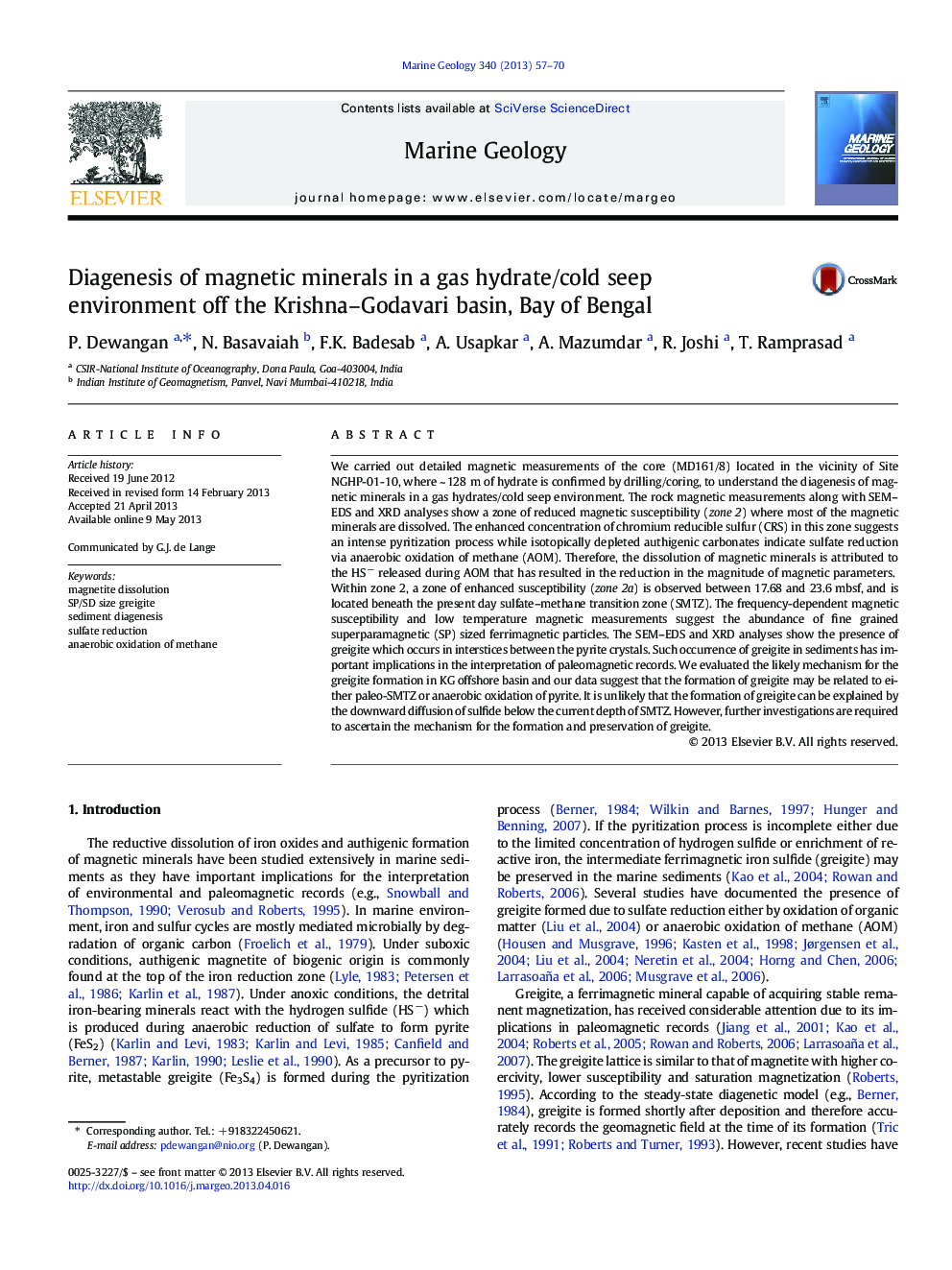| کد مقاله | کد نشریه | سال انتشار | مقاله انگلیسی | نسخه تمام متن |
|---|---|---|---|---|
| 4718400 | 1639112 | 2013 | 14 صفحه PDF | دانلود رایگان |

• Unravel the complex magnetic mineralogy in a known gas hydrate/cold seep location
• Reduced magnetic susceptibility due to AOM
• Occurrence of SP/SD domain greigite below present day SMTZ
• Plausible mechanisms for the formation and preservation of SP/SD greigite
We carried out detailed magnetic measurements of the core (MD161/8) located in the vicinity of Site NGHP-01-10, where ~ 128 m of hydrate is confirmed by drilling/coring, to understand the diagenesis of magnetic minerals in a gas hydrates/cold seep environment. The rock magnetic measurements along with SEM–EDS and XRD analyses show a zone of reduced magnetic susceptibility (zone 2) where most of the magnetic minerals are dissolved. The enhanced concentration of chromium reducible sulfur (CRS) in this zone suggests an intense pyritization process while isotopically depleted authigenic carbonates indicate sulfate reduction via anaerobic oxidation of methane (AOM). Therefore, the dissolution of magnetic minerals is attributed to the HS− released during AOM that has resulted in the reduction in the magnitude of magnetic parameters.Within zone 2, a zone of enhanced susceptibility (zone 2a) is observed between 17.68 and 23.6 mbsf, and is located beneath the present day sulfate–methane transition zone (SMTZ). The frequency-dependent magnetic susceptibility and low temperature magnetic measurements suggest the abundance of fine grained superparamagnetic (SP) sized ferrimagnetic particles. The SEM–EDS and XRD analyses show the presence of greigite which occurs in interstices between the pyrite crystals. Such occurrence of greigite in sediments has important implications in the interpretation of paleomagnetic records. We evaluated the likely mechanism for the greigite formation in KG offshore basin and our data suggest that the formation of greigite may be related to either paleo-SMTZ or anaerobic oxidation of pyrite. It is unlikely that the formation of greigite can be explained by the downward diffusion of sulfide below the current depth of SMTZ. However, further investigations are required to ascertain the mechanism for the formation and preservation of greigite.
Journal: Marine Geology - Volume 340, 1 June 2013, Pages 57–70